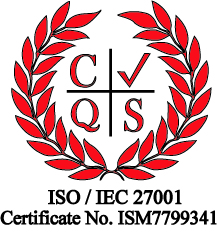It’s astonishing to think that the inaugural Oculus Headset was introduced back in 2010, a staggering 13 years ago.
Palmer Luckey, a young visionary born in the 90s, dared to bring virtual reality (VR) to life despite growing up without firsthand exposure to the futuristic visions portrayed in movies like “The Lawnmower Man.” He was let down by the limited VR gimmicks of the time, such as Gameboy VR and the short-lived Visuality arcade devices. Nevertheless, Luckey, at the age of seventeen, dreamt of revitalizing the VR industry amidst the rapid advancements in video graphics, micro-computing, and LED display technology. Fast forward to today, and we’ve witnessed the emergence of over a hundred different VR headsets and a plethora of apps across various platforms. The VR industry, now expanded to include augmented reality (AR), has become a multi-billion-dollar behemoth, unlocking applications that were once unimaginable, spanning entertainment, education, haptic-enabled surgical training, scientific exploration, and more.
A look at professional vs. consumer use
When it comes to Mixed Reality (MR), encompassing both VR and AR, entertainment has undeniably dominated the market. Following Meta’s acquisition of Oculus in 2017, it seemed that entertainment would continue to reign supreme in MR for the foreseeable future. However, recent reports indicate a balance between professional and consumer use of these technologies. The VR app market has experienced a surge in business and professional-oriented applications, including collaboration tools like MeetinVR, Spacial+, and design apps like Gravity Sketch, which enable users to view and collaborate on 3D models. While Meta primarily focuses on consumer and social applications, an increasing number of professional headsets and custom developers have emerged to meet the demand for tailored content and peripherals required by companies and organizations for their specific purposes.
One notable developer, FundamentalVR, offers a comprehensive custom solution for the medical education market with its surgical training software applications. Their offerings include mobile options utilizing the Meta Quest 2 and more hardware-intensive solutions featuring haptic feedback. FundamentalVR provides universities and hospital systems with a much-needed alternative to expensive and resource-consuming training methods for medical students and residents.
Another long-standing player in the VR industry, WorldViz, has been developing custom VR applications and experiences since 2002. Their software solution allows end-users to create their own collaborative environments, where they can present images, documents, videos, and 3D assets to other participants, whether they are in VR or on a standard PC. WorldViz also offers custom solutions such as training scenarios, design reviews, and 180/360 projection experiences for multiple users.
Is VR and AR a disruptor or enabler of other technologies?
VR and AR serve as both disruptors and enablers of other technologies. Initially, one might assume that a technology facilitating virtual meetings and collaboration could pose a threat to the audiovisual (AV) and video collaboration industry. However, given the high cost of software development and the limited familiarity of everyday users with the technology, we haven’t seen virtual meetings in sunny Spanish villas replacing Zoom sessions just yet. Even when such meetings become commonplace, there will be a growing demand for Cave systems and other methods to provide a personal headset experience to teams, whether through video walls, projections, or simply streaming the content to a display.
One remarkable example is the Christie Digital Holostage, a more compact yet immersive three-walled system equipped with 3D stereoscopic projectors, motion tracking, and interactivity. This system enables clients, particularly automakers and nuclear power facilities, to design within realistic environments. In Japan, nuclear power plants utilize this technology to enhance plant design, facilitate safer practices, and aid in disaster scenario training. It even allows virtual walkthroughs of the facility when the real one is deemed unsafe, enabling simulated fixes or repairs.
Another notable player, Igloo provides a diverse range of VR experiences, ranging from CAVE systems with 3D tracking to pop-up domes and mobile installations offering 180-degree and 360-degree immersive environments. These solutions are often utilized for short-term purposes such as trade show floors and demos. With a broad spectrum of applications and clients, Igloo demonstrates the viability and affordability of integrated VR experiences. While rear projection and short throw projection have traditionally been the norm for these setups, there is a growing demand for DVLED or OLED walls to achieve higher contrast ratios, fidelity, and eliminate shadows.
Mixed Reality not only serves as a powerful tool for commerce, training, and design, but AV designers are also leveraging its capabilities to aid in the design of AV systems and provide immersive walkthroughs of engineered systems for clients. Rendering plugins like Enscape (for SketchUp and Revit) enable designers to transform a 3D model of a conference space into a futuristic conference room, allowing real-time modifications to furniture, displays, and other assets while clients are in the virtual space. Imagine the delight of a customer donning a headset and instantly exploring a VR representation of their upcoming innovation lab, complete with a 360-degree video wall experience room!
Augmented Reality
Let’s not overlook the incredible possibilities that Augmented Reality (AR) offers to businesses and industries today. While use cases and delivery methods may vary, recent advancements have made AR a practical tool. Magic Leap, despite its challenging beginnings, has developed an open API and developer’s tools, empowering companies to create their own apps and utilize AR to a significant extent. Other manufacturers like Google, who recently discontinued the Enterprise Edition of Glass, have been adopting a trial-and-error approach for the past decade to find the optimal design, utility, and price for AR headsets in everyday life. Although AR technology is still evolving, its applications continue to expand.
While AR’s use cases still primarily revolve around entertainment (e.g., the 2016 Pokemon Go phenomenon), the real progress lies in enabling users and developers to create their own content. Consequently, many manufacturers and retailers have developed AR apps for smartphones and headsets, allowing customers to visualize products in their real surroundings. This proves especially useful when purchasing items like furniture, as customers can assess if a sofa fits appropriately in their living room or if it would overcrowd the space. AR also finds applications in education, exposure therapy, training, and enhancing live concert events with layered effects and visuals. The NSF has even developed an interactive training app called EyeSucceed, which assists food industry workers with reminders and safety checks, reducing human errors.
For AV integrators, AR proves valuable in helping clients envision the appearance of larger LED displays in existing spaces, using tools like Sketchup’s AR Viewer to view them through a smartphone camera. Additionally, there are AR headsets designed for utility workers, which AV field technicians can utilize to view system drawings and connection details while actively rewiring equipment racks. If you’re interested in learning more, reach out to New Era today.
References
- https://www.softwaretestinghelp.com/future-of-virtual-reality/
- Why Augmented Reality Is One Of The Most Promising Experimental Technologies Of This Decade (forbes.com)
- How AR and VR transform Pharma Manufacturing | by Tai Moscovich | AR/VR Journey: Augmented & Virtual Reality Magazine (arvrjourney.com)
- Frontiers | Augmenting Exposure Therapy: Mobile Augmented Reality for Specific Phobia (frontiersin.org)

 Australia
Australia Canada
Canada LATAM
LATAM New Zealand
New Zealand UAE
UAE United States
United States








